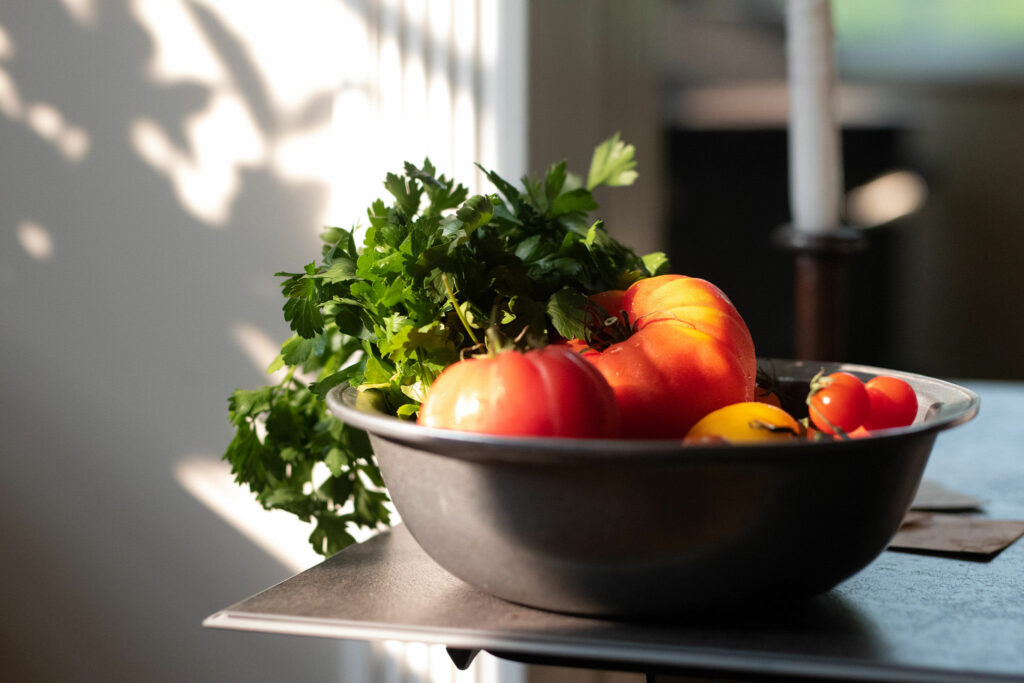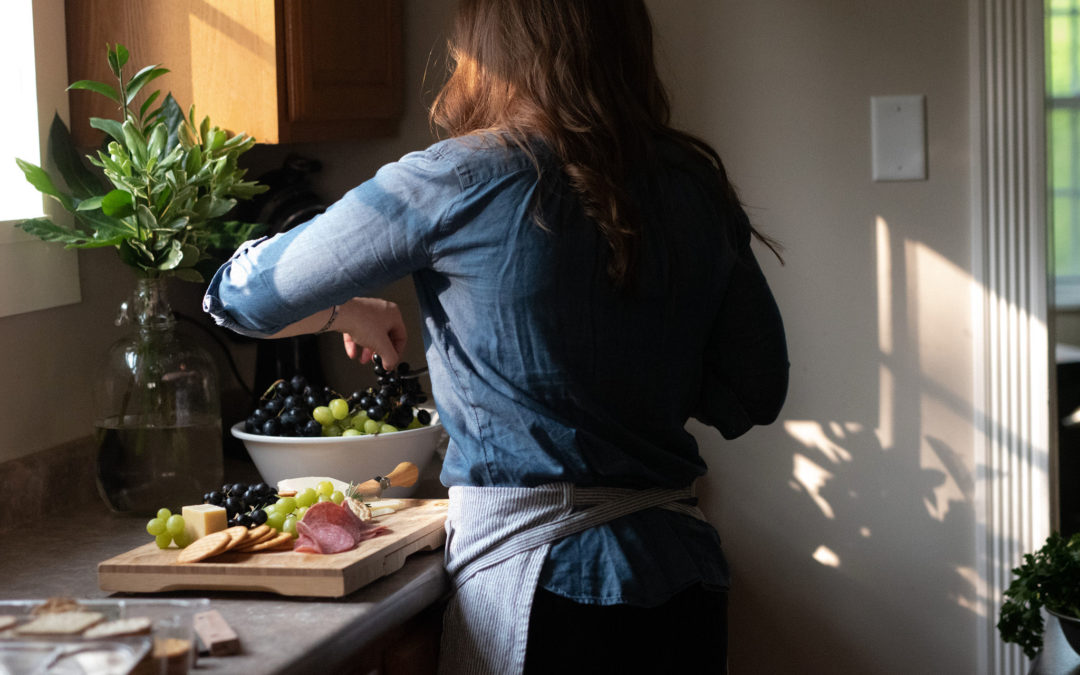When making changes to your food for your health, it’s hard to know what to prioritize. The more you pay attention the harder it is. No matter how many changes you make, you always feel like you’re losing. This step by step healthy pantry clean out guide walks you through the heavy hitters, while allowing plenty of grace to let the others things go and preserve your sanity.
It’s an overwhelming concept. Trying to feed yourself and/or your family quality food all day, every day. You’re constantly making decisions about what food to buy, and what to cook for dinner-
- Do I need gluten-free?
- Is pizza once a week too much?
The following is a list of steps and areas to prioritize so that you can feel more confident grocery shopping. I’ll take some of the confusion out of how to make decisions over what to eat so you can feel your best.
Each step you take matters. Every time you choose less chemicals, less sugar– you are improving your health, and making an impact on your body’s cells. Focusing on one area at a time takes the pressure off, but also realize- there is no finish line. You will be constantly reevaluating. Changes come, and sometimes you’ll backtrack. Either way, it’s progress. You can’t unlearn what you’ve learned along the way.
“I was able to retrain myself on how to view food as FUEL!”
-Melissa
Step 1: Use it or lose it
A lot of us have foods sitting around that never get chosen. They sit and age-losing nutrients, completely ignored.
Look through your cupboards and fridge and evaluate each item. Is it expired? Is it rancid? Do you actually want to use it- or are you hanging onto it because of guilt? Let those things go. This step is a great way to open up new space in your home and mind.
Initially letting go of the old is a great to encourage change and inspire you for good things ahead.
If you prefer, you can use these up these items instead of disposing, and you’re still making progress for your future self.
If you’re struggling with making all of these decisions, check out this post on How to eliminate decision fatigue.
Step 2: Examine your fats
One of the simplest changes you can make to make a significant impact on your health is to evaluate the quality of your oils.
Quality fats have the ability to nourish the body by building hormones, helping us heal from injury, and giving us great energy for the brain and heart. Whereas it’s counterparts increase inflammation, or cause free radicals to damage our cells.
Swapping out fats has two parts
1. Clean out stand alone oils from the pantry
- Remove vegetable oils including: canola, safflower, cotton seed, soybean, corn, peanut, rice bran & margarine.
- Replace these with olive oil, avocado oil, butter, tallow, lard, ghee, coconut oil, & duck fat.
2. Check ingredients on packaged foods
- Examine what you have in your home now, and the oils that are in them. When you find disappointing ingredients- pick the top 3 or 5 items you consume the most of and find an alternative to buy the next time. This takes time. Make space for grace.
Related: Signs your body is begging for healthy fats
To eat is a necessity, but to eat intelligently is an art.
-François de Rochefoucald

Step 3: Search out sugar
The amount of unnecessary sugars being added to our foods is pretty alarming if you’re paying attention.
Check nutrition labels for added sugars. In some cases, you may have not realized you were consuming sugar in the first place.
Added sugars appear under 56 different names. One way to identify sugar is any ingredient containing “ose” is going to be representing a sugar. Also, there is a long list of different syrups that are used, and other names you may not recognize. However, added sugar is always listed separately under the complete sugar content in a nutrition label.
Look at items like ketchup, bacon, salad dressings and yogurt. You can look for an alternative with less added sugar, or one that eliminates it entirely. Consider the good-better-best mentality and what might fit right in your life right now. Taking away your child’s favorite barbecue sauce may cause too much conflict, but finding a granola with only 6g of added sugar instead of 10g may be a sustainable switch.
You can also make an impact by using natural sweeteners in your home baking and cooking. Maple syrup, dates, coconut sugar-can be substituted for most recipes. These sugars will contain their natural minerals like potassium, zinc, magnesium etc. that we need on a daily bases.
Related: How to know if you’re a stressed out sugar burner
Step 4: Ditch the chemicals
Artificial sweeteners, preservatives, flavorings and food dyes aren’t being added to foods for our benefit.
If a product contains added ingredients that are hard to pronounce or uses an acronym or number attached to it , your body will not know how to process it. These ingredients are simply not food and the longer an ingredient list is- the farther from real food it really is.
Ditching everything spontaneously probably wont be the right move for right now. Again, focus on 3 or 5 things that you are consuming regularly, make a quality swap that you can enjoy.
Some examples to look for could include, MSG, HFCS, artificial food dyes, or hydrogenated oil.
Step 5: Replace refined bleached flours
While not everyone needs to eat gluten free, bleached white or wheat flour is not a whole nourishing food and adds no value to a diet. Consider switching to sprouted or sourdough breads. The sprouting/fermenting process breaks down the grains- making them easier to digest while also receiving the benefit of the ferment in the form of probiotics. Also look at foods made from ancient grains like einkorn, spelt, buckwheat, quinoa etc. These grains are closer to their whole form with the integrity still intact.
However, there is going to come a time when you’ll want to enjoy eating delicious pizza with your family, or your grandma’s amazing lasagna. This is when we would appreciate foods that feed the soul. Getting the majority of these grains out of the house will help prevent overconsumption and make space for random occurrences. You should be able to appreciate these moments instead of missing out on a full life. After all, food is a large part or our enjoyment in life and we want to encourage everyone to live in appropriate balance.
Related: How to bake healthier: 9 essential healthy baking alternatives

Step 6: Get more active in the kitchen
Some people may reach their personal health goals without making this part of the process. However, some will thrive in the ability to reconnect with their food. There is a great level of empowerment to appreciate by creating your own food. Realize, each person’s “best” is different- some may have more restraints on time than they do finances. If a healing diet is causing you too much stress, it’s not healing you anymore. Be gentle with yourself and recognize that each and every improvement should be celebrated, whether every item in the home is made from scratch or not.
Related: How to romanticize cooking dinner
Download the guide with clickable premade grocery lists.
Want the short cut?
Book a call to get started with implementing these strategies so you can spend less time and money trying to figure all of this out on your own.
Starting a healing journey can be overwhelming.
That’s why I help my client with pre build grocery orders, and guide them through making their own meal plans.
*This post contains affiliate links, which means I may receive a small commission at no extra cost to you. I do not recommend products that I have not personally vetted.*
Photos: Becky Simson



Eating cleaner is something we need to do! Thank you for the ideas.
I hope this helps!
this is helpful, thank you. Who knew sugar had so many different names??!
So sneaky!